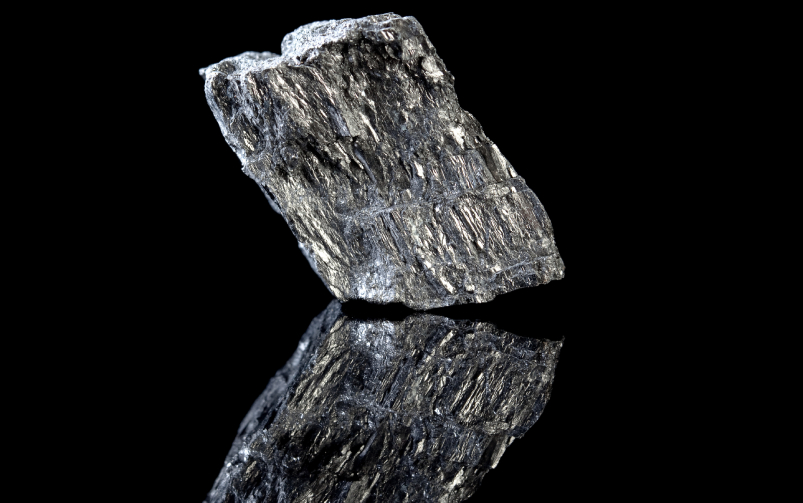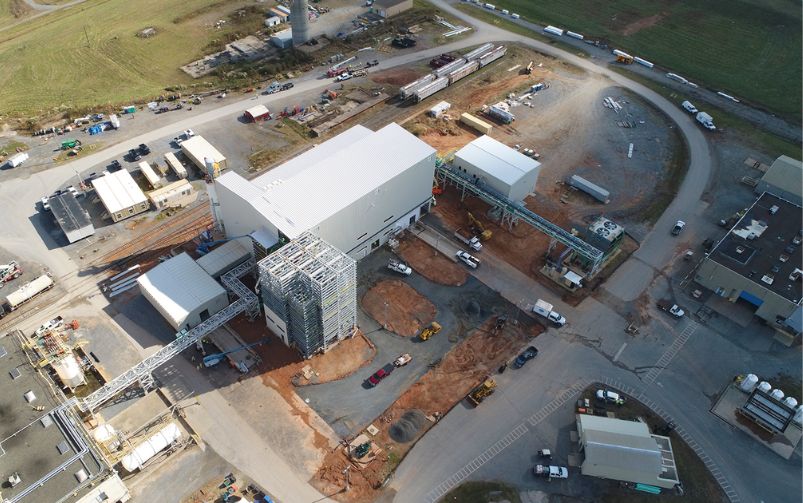Storing atmospheric carbon dioxide in mine tailings could help offset some of the emissions produced by the mine. Courtesy of University of Waterloo.
While bioleaching—a process that uses microbes to extract valuable metals from ore—has been around for decades, new research shows that it can be used in combination with the process of microbial mineral carbonation to store atmospheric carbon dioxide in mine tailings.
According to research published on March 21 in the journal Plos Biology, weathering, which is the breakdown of rocks through chemical and physical processes, is an important regulator of atmospheric CO2. This is because the gas reacts with major rock-forming minerals to form solid carbonates, removing the CO2 from the atmosphere and storing the carbon in a stable form, in a process called carbonation.
Certain microbes facilitate weathering by producing acids that dissolve rocks, accelerating the release of their minerals. These natural processes happen too slowly to reduce anthropogenic climate change, but through accelerating the natural weathering of fine-grained rock powders, such as mine tailings, in a process known as enhanced weathering, the researchers hope to speed up CO2 removal from the atmosphere.
The authors from the University of Waterloo and Trent University note that alkaline tailings from diamond, nickel, cobalt and other metal mines are best suited for enhanced weathering and mineral carbonation, while at the same time extracting valuable commodities via bioleaching.
“Weathering of tailing minerals consumes CO2 and can be accelerated using microbial processes that produce fluids for mineral carbonation reactions,” the authors wrote. “Bioleaching is an established mining practice for increasing mineral dissolution rates and can be tuned for different ores, including those that generate alkaline tailings.”
The authors added that tailings at many legacy facilities contain low concentrations of critical minerals, including nickel and cobalt, that were not previously economical to extract. “Bioleaching can recover these metals to help meet increasing global demands,” they stated.
Recovering metals from waste would also reduce the risk of residual metals entering local waterways or groundwater, according to Jenine McCutcheon, an assistant professor in the Department of Earth and Environmental Sciences at the University of Waterloo in Ontario. McCutcheon published the research with co-author Ian Power, an associate professor at Trent University.
“Something we've been studying for over 10 years now is this process of carbon storage in mine tailings as a means of offsetting some of the emissions produced by the mine, with the eventual goal of working towards carbon neutral mining,” McCutcheon told CIM Magazine.
“In combination with metal recovery, microbial mineral carbonation can be applied at mine sites, turning them into industrial carbon sinks,” the authors wrote. “Weathering of alkaline mine tailings produces solutions rich in dissolved magnesium and calcium, which react with CO2 to form carbonate minerals, thereby providing a pathway for direct air capture of atmospheric CO2.”
A recent trial that applied these biogeochemical processes to waste from a diamond mine demonstrated that microbes called cyanobacteria could contribute to both mineral weathering and the following microbial mineral carbonation.
The paper refers to a related study that showed that even low rates of microbial mineral carbonation and associated biomass production using cyanobacteria could offset 34 per cent of annual greenhouse gas emissions if the process was applied to the entire mine. In addition, further process optimization could increase emission offsets, potentially achieving carbon-neutral or carbon-negative mining.
McCutcheon added that the decarbonization transition, and demand for green technologies like solar panels and electric vehicles, require a wide variety of transition metals and rare earth elements.
“With these demands, we do have to also think about the emissions that are produced in the process of, say, making your electric car,” she said. “So just because you aren't putting gasoline in your car, that doesn't mean there aren't emissions associated with producing that vehicle. So now we have to start thinking about the lifecycle of the overall product.”
McCutcheon said that while the process has worked in smaller-scale experiments in the lab and a few historical mine sites in Canada, Australia and South Africa, the next step is industrial deployment.
According to the paper, increased funding and industry engagement is needed to advance these technologies and move towards large-scale implementation, from retrofitting legacy sites to designing new mines that pair resource extraction with CO2 removal.
McCutcheon said the challenge will be figuring out how to deploy the process across an entire mine site, accounting for variations in climate, environmental conditions and minerology and geochemistry differences in different tailings.
With more than 10,000 abandoned mine sites in Canada, the paper stated that “combining bioleaching, metal recovery, and mineral carbonation of mine tailings gives value to these materials historically deemed industrial ‘waste.’”




